The evolution of learning and learning environments.
INTRO
The concept of ‘modern’ depends on where you are placed in time. The word itself relates to the present and the recent ideas and methods we use. Since we are currently placed in the third decade of the 21st century, modern teaching for modern learning relates to where we find ourselves right now in history.
Few will disagree that we are in unchartered territory globally with converging exponential technologies, shifting ideologies and progressing belief systems. But what does this mean for educators, school administrators and state and national education systems? And how will this all affect students now and into the future?
Before we consider where we are going, let us look at where we have come from.
Disrupting the industrial model
The industrial model of mass education, designed for efficiency and uniformity, has proven pervasive. The curriculum, the classroom and the practice of teaching sought to corral students to a maintain efficiencies and a common experience. It also grouped them according to age. In this context, some students would rise to the surface, but many would flounder.
School furniture was made to support this militaristic way of teaching and learning. One-size-fits-all single desks and chairs, arranged in rows, facing the front was the norm.
The industrial model of schooling was largely maintained until a major disruption surfaced. This coincided with the beginning of the 21st century, which, in many aspects of life signified a shift in culture as much as a shift in time. It was in that first decade of the new century that many in education began to see the potential of technology. Following this people began questioning the relevance of the school model to adequately prepare students for the emerging digital era.

The winds of change
A 2006 TED Talk, “Do schools kill creativity?” (1) by Sir Ken Robinson caught our collective imagination with his views on schooling. Sir Ken tapped into a growing sentiment, arguing that schools, “focus much of their time on things like rote memorisation and knowledge mastery… not only do schools do a poor job of promoting creativity, they actually kill it through a system designed to produce students in factory-style outputs”.
Several ideas about the future of education began emerging and a groundswell of change began developing. We started hearing about concepts such as…
- ‘Future-focused learning’ which allows students to take control of their own learning while building skills needed for future success. This synthesised into models such as the 6Cs of deep learning by Fullan and Langworthy (2) and Micro-Learning where students could participate in university style modules. Even pedagogies that incentivised gaming began emerging.
- Deep learning also became a focus of John Hattie and his colleagues (3). This noted that while surface learning had its place in growing content knowledge, our goal as educators was to move students toward deeper learning, beyond the conveyer belt of the content delivery-test-repeat model.
Whichever the learning or teaching mode, they all strived to move learning beyond the conveyer belt of the content delivery-test-repeat model to deeper learning that prepared students for this new digital age.
A shift to the future
As educational thinking shifted from the industrial model into the digital age, questions emerged around the suitability of school and classroom design to support those shifts. Uniform school designs, modelled on the factory, began to give way to more agile and open learning environments that recognised modern concepts and necessitated new ways of thinking, working, and learning. Furniture for these spaces also started evolving. This included a diverse range of soft and hard surfaces, with innovative features such as writable surfaces, height adjustability, agility and integrated technology. This modern furniture allowed the creation of a rich variety of spaces that afforded teachers and students choice, improved student engagement, communication and curiosity, while supporting the flow of learning.
Re-imagining the place of learning and work
PhD research by Dr Anne Knock (4) explored the innovative learning environment (ILE) as the teachers’ place of work and the shifts that needed to occur in thinking and practice to take advantage of the pedagogical opportunities such environments offer. ILE is a modern way of reconceptualising the classroom. It considers innovative design and innovative pedagogical practices together, along with the impact of spatial affordances and furniture. The exploration of the learning environment led Anne to consider the work and the workplace of teachers.
The research highlighted the effectiveness of pedagogy and deeper learning in a redesigned learning environment. It found that effectiveness is commensurate with time provided for teachers to reconceptualise their practice as a team, as modern spatial designs often enable co-teaching and/or the provision of shared common spaces. However, adapting professional practice away from a predominantly solo teacher model takes a strategic and deliberate process to be successful and sustainable.
Anne’s research applied Goffman’s performing arts metaphor (5) of the front stage and back stage to explain this. If we asked the person-in-the-street to describe the work of the teacher, we can be sure that it would include a teacher with students in a classroom, on the front stage. But as we know, much of the important work occurs on the back stage away from the students. Ideally, sufficient time is prioritised for teachers to be together, to collaborate, engage in learning design, grapple with ideas and grow together as a team.
The diagram below represents this. At the heart of the work of educators is providing the environment for engaged and curious learners, enabled through diverse and challenging pedagogy and learning on the front stage. Creating teaching and learning zones, places for social connection, and attention to aesthetics and comfort all work together to support the effectiveness of the experience.

In addition, the efficiencies of organisation can contribute to this front stage experience, supported by ease of access to resources and considering other practicalities, such as movement across the space. Finally, purposeful attention to teachers’ back stage work is critical to not only for necessary administration but facilitating teachers to come together as a team for the creative work of planning, collaboration and design as a strategy. Many teaching teams find that it is helpful for the collaborative design process to occur in an area where they can visually map the design as a continual work-in-progress.
What does the future hold?
The real question is, what are the potential futures facing us? Our work at The Learning Future includes examining trends and signals and engaging in strategic foresight to imagine ‘what is made possible’.
We are in an incredible moment of transformation, of converging exponential technologies. These are enormous drivers and shifts in the economy and the community. Our foundational view is that in an uncertain future, learning is your greatest asset. Both as an individual and as an organisation. When we think about the preferred future, it is one dominated by fully human learning experiences and workplace environments, cultivating all aspects of an individual – mental, emotional, social, physical and spiritual. This means our interest lies in the potential of technologies to unlock human flourishing underpinned by regenerative design.
The future will be increasingly ambiguous and volatile, but this calls us to pay attention to the things that matter most. Concepts like agency, belong, creativity, discernment, embodiment and flourishing, are the emerging principles for anyone interested in the future of schooling, learning and work.
To solve complex problems, we must do this together, leveraging ‘the extended mind’ (6). Solving problems in teams, authentic real-world learning, where education systems transform from linear acquisition of knowledge to webs of applied wisdom. Only if we set up young people to have a joyful childhood, whilst engaging with the skills that unlock significant potential, might we say that a school is fit for the future.
Ultimately the future is unknowable, but each of us should have a clear vision of the future we want and then to embark upon learning and growth that is lifelong, life wide and life deep.
Conclusion
Modern teaching for modern learning describes where we find ourselves today, adopting ideas and methods that serve our time. However, we all know that what was once modern, can quickly become out-of-date. It is our responsibility to keep our eyes on the horizon, to learn and understand, to adapt to the changing world and employ wisdom and discernment as we make progress.
References:
- Robinson, K. (2006, February) Do schools kill creativity? [Video]. TED Conferences. https://www.ted.com/talks/sir_ken_robinson_do_schools_kill_creativity
- Fullan, M, & Langworthy M. (2016). A rich seam: How new pedagogies find deep learning. Pearson
- Hattie, J., & Zierer, K. (2018). 10 mindframes for visible learning: Teaching for success.
- Knock, A. (2022). The Beauty of a Complex Future: Redefining Teacher Success and Sustainability in Innovative Learning Environments [Doctoral dissertation, University of Melbourne]. Minerva Access https://minerva-access.unimelb.edu.au/items/aed4351d-eb70-4e44-82fa-fc86499895ca
- Goffman, E. (1959). The presentation of self in everyday life. Doubleday.
- Paul, A. M. (2021). The extended mind: The power of thinking outside the brain. New York













